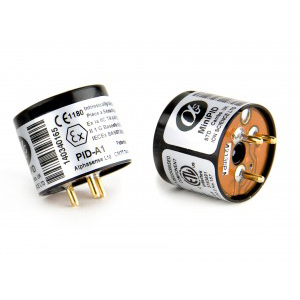PID
-
Information
With a PID, the sample gas is exposed to deep ultraviolet light.
The emitted light ionises targeted gases and they are then detected by the PID electronics and reported as a concentration (ppb or ppm).PIDs can measure Volatile Organic Compounds (VOCs) to very low concentrations.
Considered the gold standard for VOC measurement, Alphasense PIDs are compact and low power, with recently improved electronics and longer lamp life. An extended family of lamps now include better BTEX and chlorinated VOC detection. These sensors are pin-replaceable with the 4P90 pellistor.
The Alphasense PID sensor is offered in two models, A12 and AH2. They are virtually insensitive to humidity changes, providing unparalleled performance in a variety of applications.
PID-A12 has a linear dynamic range of 50 ppb to 6,000 ppm (Isobutylene).
PID-AH2 has a linear dynamic range of 1 ppb to 50 ppm (Isobutylene).
The sensors include a detector with lamp driver, amplifier circuitry, and user replaceable electrode stack, 10.6 eV lamp and particulate filter.
Application notes
Download PID Application Notes – see application notes for full details.
Data sheets
-
Q&A


